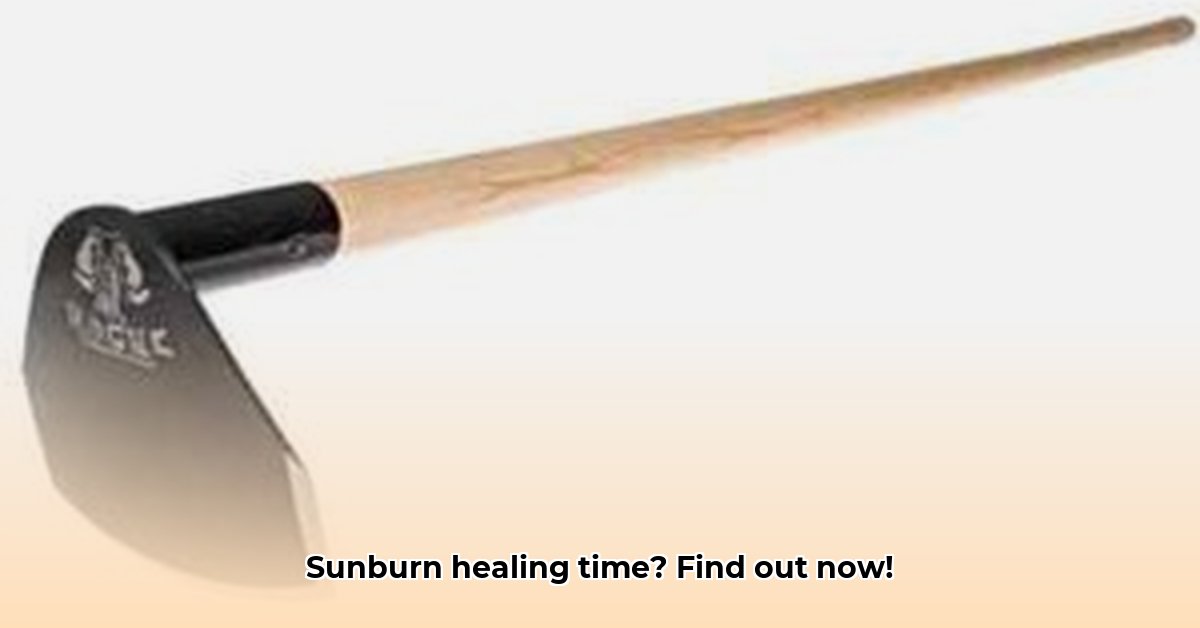
Right, so you've got a bit of a sunburn, jou? Don't stress, it happens to the best of us. Knowing how long it'll take to heal is the first step to feeling better. This guide will walk you through everything you need to know about sunburn recovery and prevention, from mild redness to those seriously sore burns. We'll explain what to do, what the experts recommend, and how to prevent this whole moegoe next time. Let's get you feeling better, vinnig vinnig!
Understanding Sunburn Severity
A sunburn is your skin’s way of saying, “Whoa, that was a bit much, sunshine!” The healing time depends on how badly your skin's been affected. Think of it like baking a cake: a slightly burnt edge is different from a completely charred one.
We grade sunburns according to how deep the damage goes:
| Burn Degree | What it looks like | Healing Time (approx.) | What to expect | What to do |
|---|---|---|---|---|
| First-degree | Red skin, a bit sore, maybe a little swell | 2-5 days | Mild discomfort, redness, slight swelling | Cool compresses, soothing lotions (like aloe vera) |
| Second-degree | Red, painful skin with blisters | 1-3 weeks | Pain, blistering, swelling, possible peeling | Cool compresses, aloe vera gel, over-the-counter pain relief |
| Third-degree | Deep blisters, white or charred skin, intense pain | Several weeks to months; possibly skin grafts | Severe pain, deep tissue damage, serious scarring | Seek immediate medical attention! |
| Fourth-degree | Full-thickness burn, damage to bone and muscle | Months to years; extensive treatment | Extreme damage, potentially nerve damage, hospitalization | Go straight to the hospital – this is a serious emergency! |
Remember, these are estimates. Your healing time might be quicker or slower depending on factors like your overall health and age.
Treating Your Sunburn: Soothing Steps
Treatment depends on the severity of the burn. For mild sunburns (first and second-degree), focus on comfort and gentle healing.
Step 1: Cool it down: A lukewarm bath or cool compresses (never ice!) are your best friends. Avoid hot water.
Step 2: Hydrate: Drink plenty of water. Your body needs hydration to repair itself.
Step 3: Moisturize: Use a gentle, unscented moisturizer, such as aloe vera gel, to help prevent your skin from drying out and cracking. Avoid anything with perfume or strong scents.
Step 4: Pain relief: Over-the-counter pain relievers, such as ibuprofen or paracetamol, can help with discomfort. Follow the packaging instructions carefully.
Step 5: Aloe vera: Many find aloe vera gel soothing. You can use the gel directly from a plant (if you have one) or use a store-bought gel.
For severe sunburns (third and fourth-degree), go straight to the hospital or doctor. These are serious burns and require expert medical care.
Sunburn Prevention: Your Best Defence
Preventing a sunburn is far better than treating one – trust us! Here's how:
Sunscreen is your superhero: Use a broad-spectrum sunscreen with an SPF of 30 or higher, applying it generously 20 minutes before going outside. Reapply every two hours, especially after swimming or sweating. Is dit nie 'n goeie idee om jouself te beskerm teen die son nie?
Smart shade strategies: Avoid the sun's strongest rays, usually between 10 am and 4 pm. Seek shade whenever possible. A fact: The sun's rays are strongest during midday.
Dress the part: Protective clothing, like a wide-brimmed hat, sunglasses, and long sleeves, provides excellent protection.
Check the UV index: Be aware of the UV index before heading outdoors. A high UV index means stronger sun rays and a greater risk of sunburn.
How to Prevent Long-Term Skin Damage from Mild Sunburns
Even mild sunburns can contribute to long-term skin damage. Repeated mild burns add up, increasing your risk of premature aging and skin cancer.
Your Action Plan: Long-Term Skin Protection
Regular sun protection is vital for your skin’s long-term health.
- Strategise Your Sun Exposure: Limit time in direct sunlight, particularly during peak hours (10 am – 4 pm).
- Embrace the Shade: Seek shelter under trees, umbrellas etc.
- Sunscreen is Your Shield: Apply broad-spectrum sunscreen (SPF 30 or higher) 15-30 minutes before sun exposure. Reapply every two hours.
- Protective Clothing: Wear protective clothing.
- Be Mindful of Reflective Surfaces: Sand, water, and snow reflect sunlight, increasing exposure.
- Regular Skin Checks: Check your skin regularly for any unusual changes.
When to See a Doctor
While most mild sunburns heal on their own, seek medical advice if you experience:
- Fever
- Severe pain and blistering
- Signs of infection (pus, increased swelling)
- Extensive sunburn
Remember, protecting your skin from the sun is an investment in your long-term health and well-being. Stay safe, stay sun-smart!